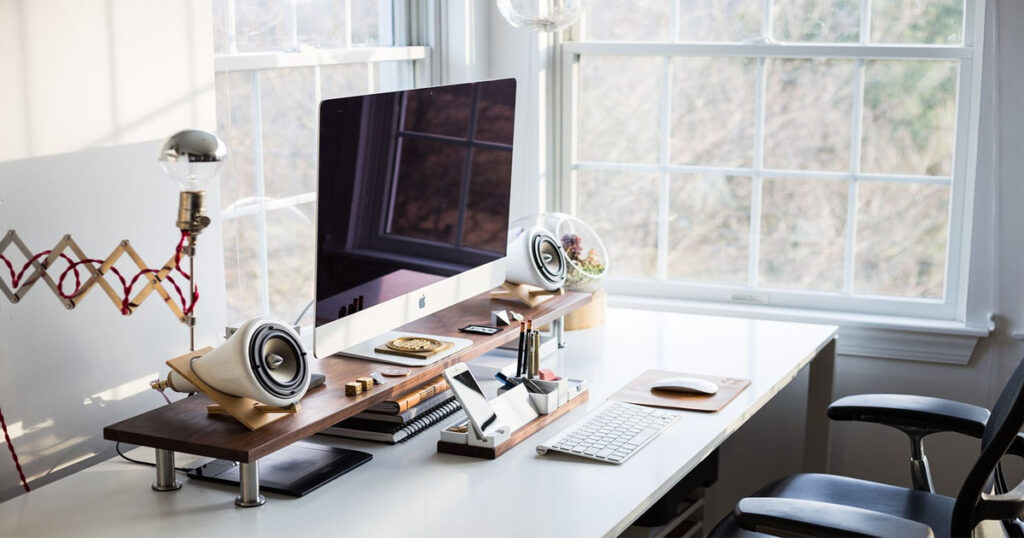Key Factors for Selecting the Ideal Under-Table Keyboard Tray

Choosing the right under table keyboard trayy involves considering ergonomic, functional, and practical factors to enhance posture, productivity
Maintaining an ergonomic setup in modern workspaces is crucial for productivity and comfort. The keyboard tray is one essential accessory that contributes significantly to an efficient workstation. This component helps keep desks clutter-free and promotes a healthier posture by allowing users to position their typing devices optimally.
When selecting an ideal Keyboard Tray Under Desk, several important factors should be considered to ensure it meets ergonomic and functional needs. This guide will explain the key aspects, from design and material to adjustability and space efficiency. By considering these aspects, you can make an informed decision that enhances comfort and productivity in your workspace.
Ergonomic Design
A well-designed keyboard tray should enhance user comfort and productivity. Look for ones that deliver adjustable height and tilt options, allowing customization according to individual needs. This flexibility reduces strain on wrists and shoulders, contributing to a more comfortable typing experience. An ergonomic design also provides ample space for both typing devices, ensuring easy access and proper alignment.
Material and Durability
Durability is a key aspect when choosing an under table keyboard tray. Opt for models constructed from robust materials like metal or high-quality plastic. These materials ensure longevity and stability, supporting the weight of the typing devices without bending or breaking over time. A durable one also minimizes noise during use, contributing to a quieter and more attentive workspace.
Ease of Installation and Compatibility
Practicality in installation and compatibility with various desk types are essential considerations. Choose a tray with clear installation instructions that securely fits under different desks. Some offer universal compatibility, while others may require specific measurements or desk configurations. Ensuring a proper fit and straightforward installation saves time and effort during setup.
Adjustability and Customization
Adjusting the tray according to personal preferences is crucial for an ergonomic workspace. Look for the ones that allow height, tilt, and sliding adjustments. Adjustable trays cater to users of different heights and sitting positions, promoting a more tailored workstation setup. Customization options ensure the tray can be adjusted to specific ergonomic needs, enhancing comfort and efficiency.
Space Efficiency and Cable Management
Maximizing space efficiency is particularly important in compact work environments. Choose a tray that makes the most of under-desk space while providing enough room for typing devices. Integrated cable management features are also beneficial, keeping wires organised and out of sight. This reduces the risk of tangles and damage, maintaining a cleaner and more organised workspace.
Smooth Gliding Mechanism
A smooth gliding mechanism is essential for the seamless operation of the tray. Look for trays with high-quality slide rails or ball-bearing mechanisms that allow it to move effortlessly. This feature ensures the tray can be pulled out and pushed in smoothly, providing easy access to typing devices without hassle.
Weight Capacity and Stability
Ensuring that the tray can support the weight of your typing devices is crucial. Check their weight capacity to ensure they can handle the load. A stable tray reduces wobbling and movement during use, which is important for maintaining a steady typing posture. Stability and weight capacity are key factors in choosing a reliable one.
User Reviews and Recommendations
Reading user reviews and seeking advice can provide useful insights about different trays’ performance and durability. User feedback often highlights the pros and cons that may need to be apparent from product descriptions. Recommendations from other users can guide you in selecting a tray that best meets your needs and expectations.
Choosing the perfect under table keyboard tray involves considering various ergonomic, functional, and practical factors. An ideal tray supports better posture and typing ergonomics and contributes to a more organized and efficient workspace overall. Making a well-informed choice can significantly improve one’s daily work experience.
Must Read: Explore the Dangers of Zola Hospice Fraud





